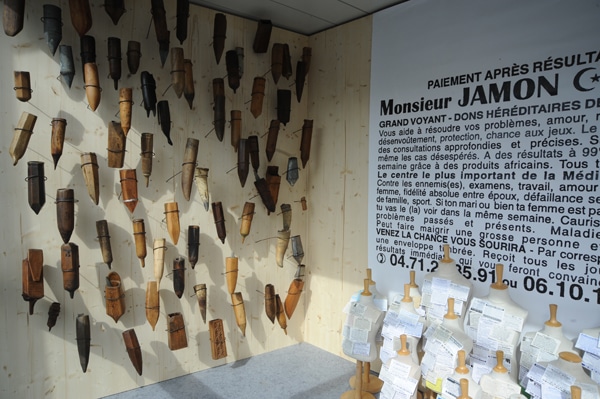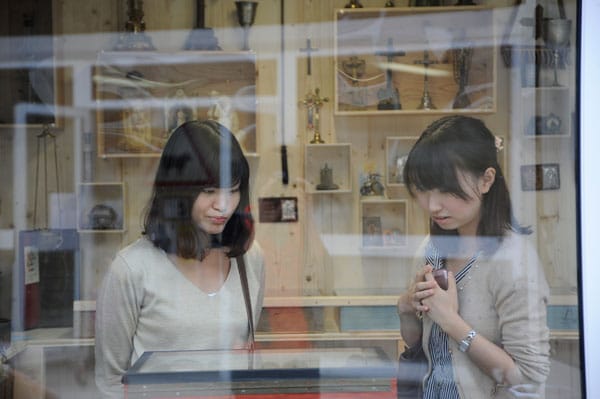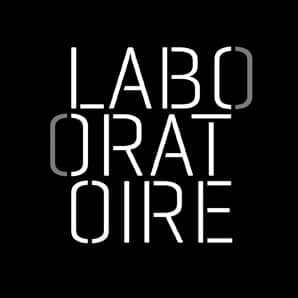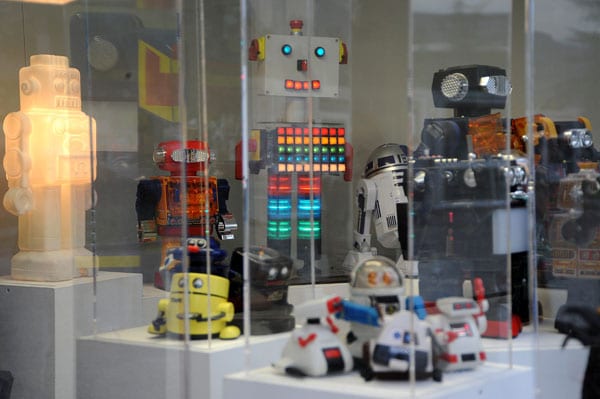Sep 11, 2019 | local contemporain en
As we witness the collapse of animal populations, it seems urgent to document and symbolize the contribution of animality in the humanization of humanity.
By observation and imitation, humanity has acceded to an animal intensity of sensations which completes ours. The paintings of the Lascaux or Chauvet caves testify to the distances of this dynamic complicity. Wild or domesticated, animals have broadened the consciousness and perceptions of humanity and it would be a terrible regression to accept the sharing of the world between the industrialization of “useful” animals and a generalized ecosystem desert.
To improve our quality of life, we need to recompose human societies in order to facilitate the stay, development and movement of animality, that is to say, to carefully put together entanglements of spatialities and temporalities that do not bow to human interests and projects. It is not a question of preserving enclaves, zoos or genetic banks, but of reinventing a welcoming society for this reservoir of escaping vivacities, a necessary condition of a vivacious and promising humanity.
Because animals participate in the stability of human societies by their work, their affection, the irreducibility of their behavior. They form the humus necessary for the humanization of humanity.
Our initiative, whose form is still confidential, will involve many authors, crossing the approaches of livestock practitioners, shepherds, trainers, artists and researchers to build publically sharable symbolizations with as many people as possible.
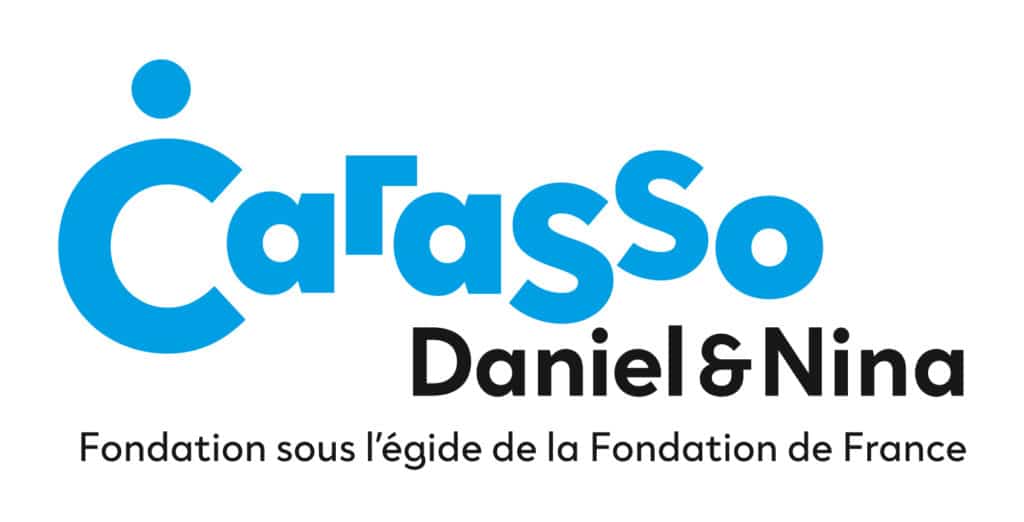
Apr 27, 2017 | Laboratoire en
The Aegean Sea remains that of Homer.
This time there is no mention of the winds of Aeolus, pushing Ulysses away from Ithaca.
This time, it is the land of collision which refuses the disembarkment and the arrival.
This time, the shipwreck is a terrestrial will.
Erri de Luca
The boat fill up with passengers when the ship sank.
These boots have filled up because the earth is sunk.
Erri de Luca
Press article
Le plaidoyer pour l’humanité de Maryvonne Arnaud
Comment aborder la crise migratoire avec justesse ? La photographe grenobloise Maryvonne Arnaud prend le problème à bras le corps pour un “Mauvais temps” qui se décline aussi en installation et en vidéo, avec une justesse renversante. Une exposition forte à découvrir à la Bibliothèque centre-ville de Grenoble.
LE VENDREDI 21 AVRIL 2017 PAR CHARLINE CORUBOLO
Crédit Photo : Charline Corubolo
Mauvais temps
Installation de Maryvonne Arnaud
Bibliothèque Centre Ville 10 rue de la République Grenoble
Jusqu’au 6 mai 2017
À LIRE AUSSI
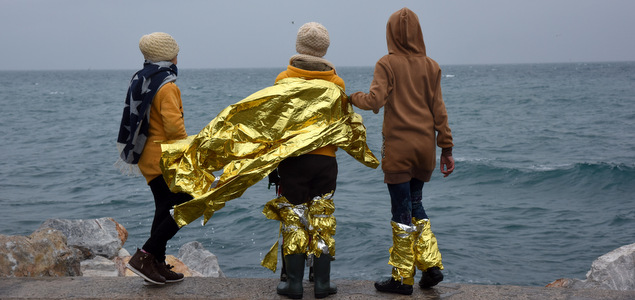
Grenoble lance ses États généraux des migrations
Dire que l’ère est viciée, que l’air du temps est mauvais est un euphémisme en ce début de XXIe siècle. Entre les discours excluants et les images venant du terrain, il est difficile de trouver le recul adéquat pour aborder la crise migratoire actuelle. Mais leMauvais temps de Maryvonne Arnaud, qui se déploie actuellement à la Bibliothèque centre-ville, le fait avec authenticité et pudeur. Photographies, installation et vidéo agissent de manière percutante sur la conscience, notamment grâce à la finesse de la scénographie.
Suite à de multiples voyages à Athènes, Idoméni mais aussi sur les îles de Lesbos et de Chios où arrivent par vagues des migrants de Syrie, d’Afghanistan, d’Irak ou encore d’Iran, l’artiste grenobloise a composé un carnet de mer visuel où le renversement d’échelle met le spectateur face à ses responsabilités, où le manque de recul pousse à la réflexion, où les gilets de sauvetage échoués sur les plages remplacent les corps.
Des scènes fortes desquelles émerge l’espoir sur un visage souriant à travers la grisaille, malgré les mots de l’auteur italien Erri De Luca mis en voix sur les images de la photographe « Ils séparent les morts des vivants, voici la récolte de la mer. » Et voici le plaidoyer photographique de Maryvonne Arnaud pour l’humanité, pour l’éveil de nos consciences.
Mauvais temps
À la Bibliothèque du centre-ville jusqu’au samedi 6 mai
Oct 9, 2014 | editions en, local contemporain en
local.contemporary 08
80 pages / 15 €
ISBN 978-2-36744-072-9 / legal deposit November 2014
Texts by Maryvonne Arnaud, Miguel Aubouy, Daniel Bougnoux, Yves Citton, Michel Duport, Alain Faure, Antoine de Galbert, Jean Guibal, Patrice Meyer-Bisch, Philippe Mouillon, Henry Torgue, Guy Tosatto.
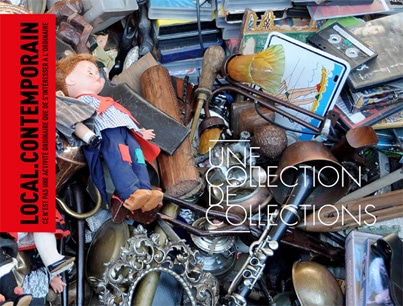
How do you best express your inner self, that is to say, make public what you know intuitively and feel deeply inside, so that someone else can seize it for his own self-enlightenment?
You are unsettled by this interweaving of a thousand little threads of knowledge that you had half forgotten, of a mix of flavours, of feelings apparently dormant or ill-defined. This, however, is precisely what does define a public space in the most political sense of the words. It’s at the crossroads, the point at which these harmonise, where we come alive in this world, where we define each other.
Sharing our most personal passions, as a Collection of Collections suggests, is to adjust the universally felt financial value by remembering our own value criteria, the incalculable value of the things we’ve loved in life.
Feb 7, 2014 | editions en, local contemporain en
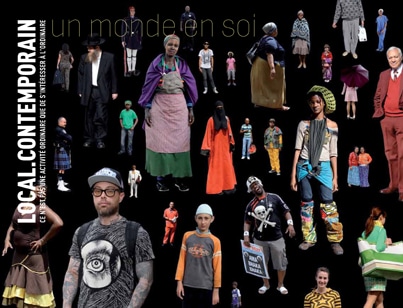
local.contemporain 07 / 80 pages / publishing le bec en l’air
Texts by Patrick Chamoiseau, Daniel Bougnoux, Maryvonne Arnaud, Yves Citton, Images by Maryvonne Arnaud
What does it mean to be a “human being”? How do you live up to this ever evolving notion metamorphosising before our very eyes, in amongst us and always growing? How do you conceive of or limit our idea of humanity in this era of globalisation?
Don’t let’s get hung up on any false or outdated idea of a human being: humanity lives in all of us in equal measure. This vague notion suggests that it is only ever shared by those with the same language or culture and consequently is implacably divided up. You cannot know what humanity is or could be, when you only have a little part of it, when you will only ever know the tiniest sample of it.
“Other people” boundlessly symbolise the enormous missing part which we must document and explore endlessly. The missing part is also a term used by scientists, when they call it antimatter, which we don’t know anything about, only having access to matter which to exist, needs the part that escapes us.
In our streets, as in the infinity of space, bodies express themselves and sometimes just skim past each other, at immeasurable distances from one another. How can you ever measure mankind?
download the order form here
Feb 5, 2014 | Laboratoire en
The Collection of collections is a traveling installation designed at the request of Universities, with three concerns: revitalization of the artistic heritage inscribed on the campus of Grenoble, opening students to the unexpected as a prerequisite posture to any innovation and experimentation of new territorial links between the city center and the campus.
This urban installation is achieved through the random participation of many collectors. Young or old, rich or poor, man or woman, the collector’s posture crosses the social backgrounds and generations and it is this symbolic discrepancy that appears successful here. The poetic power of the result is indeed based on the hospitality offered to all collectors wishing to participate. Each one brings his own world, because the collection is often the crystallization of an obsession doggedly continued over many years. During this hunt, each collector has sharpened his gaze and deepened the intuitive attraction of the first objects gathered for the benefit of a knowledge increasingly refined over the accumulation of this series of objects, and of an accumulative loyalty requiring him to think in order to classify, prioritize and share.
These imaginaries collected without any hierarchical concern are then placed inside the cabinets of curiosities of urban scale set in the street. The Collection of collections is based on the fertility of the unexpected and of the dynamic relationships between these heterogeneous imaginary in close vicinity. The visitors can enter in most areas to immerse themselves in each collection, reflecting the uniqueness of each of our lives.
These collected objects are somehow generators or accelerators of conversation. In this sense, the Collection of collections is an invitation to walk in the proliferation of human imagination and otherness. As an hospitality area, this collection of worlds regenerates the public space by creating meetings and exchanges. It confuses, loosens and thins the commonly accepted hierarchies between work and hobby, fine art and popular art, intimate space and public space, the specialist and the amateur. It proposes to make visible and circulating words that are not heard, practices that are not expected and intuitions that are not considered.
The Collection of collections carries a current on the front of the territorialisation of an organic public space. For if today many citizens appear to be detached of conventional political representations, they are yet aware of the social and urban contemporary changes and participate daily in new arrangements.
This is a temporary paradox of our time: behind the appearance of a floating attention and a disinterest in public affairs, a new citizenship is particularly active in online social networks and today turns Internet into a contributory public space, sharing, exchange, mobilization or alternative action.The classic public space seems neglected, when the virtual space is now heavily invested by subjects who feel the need to take ownership of their lives, to extend it by sharing and to renew it by giving it an enlarged presence.


